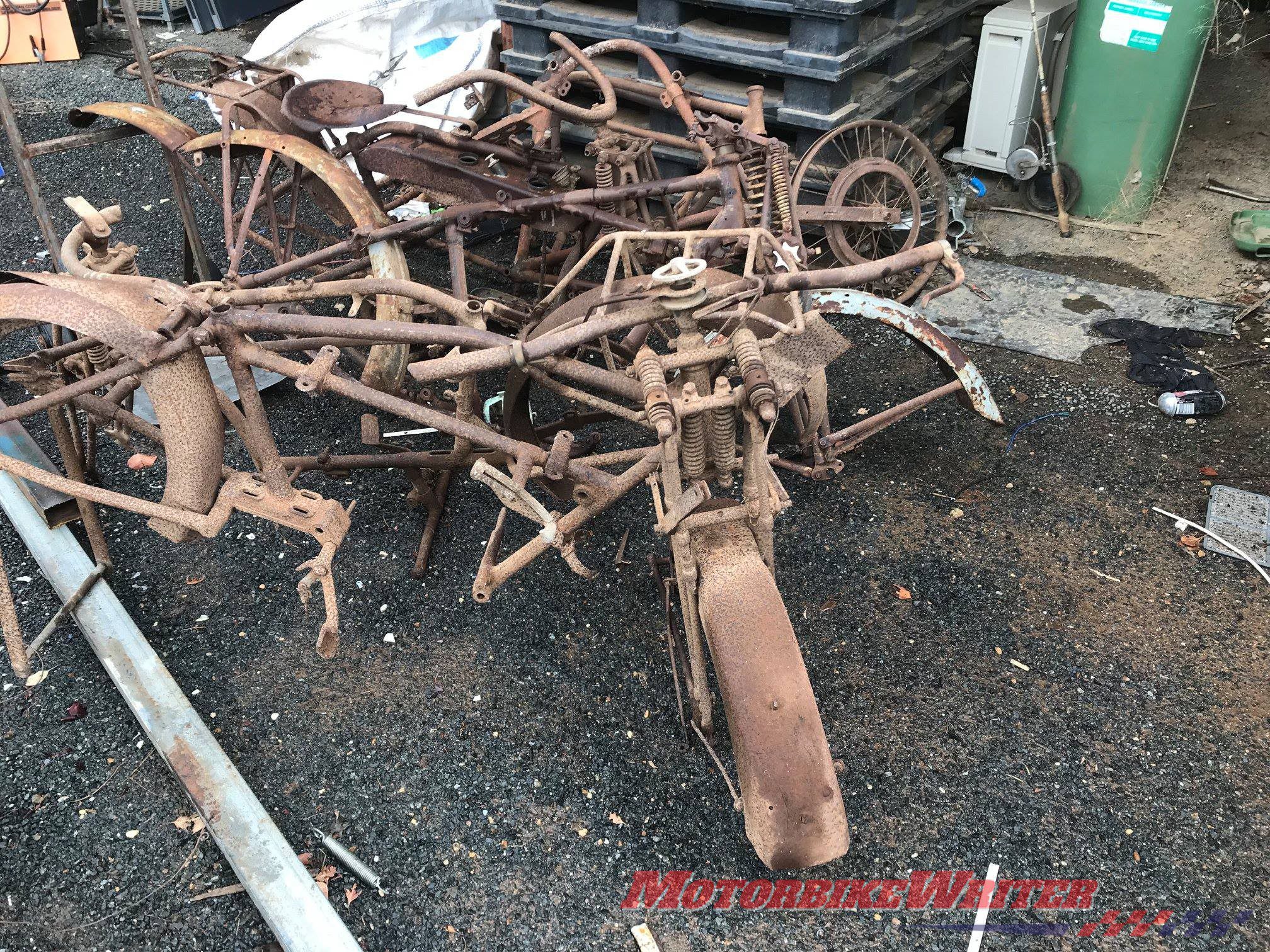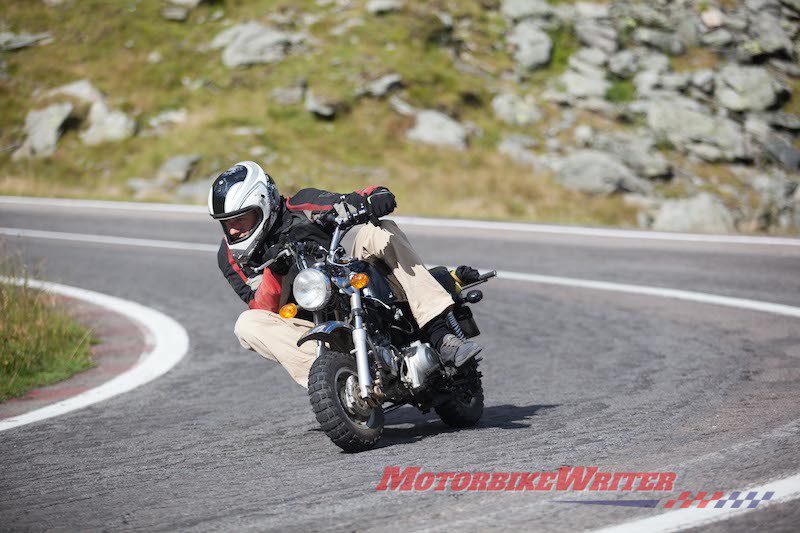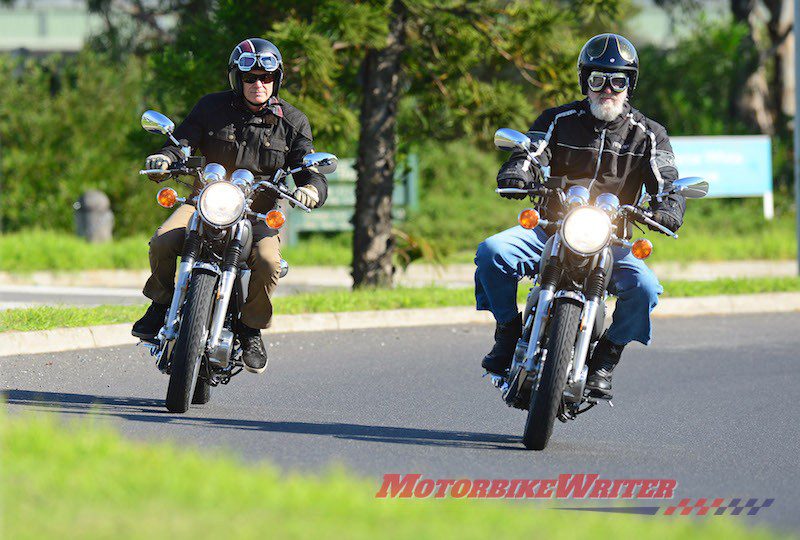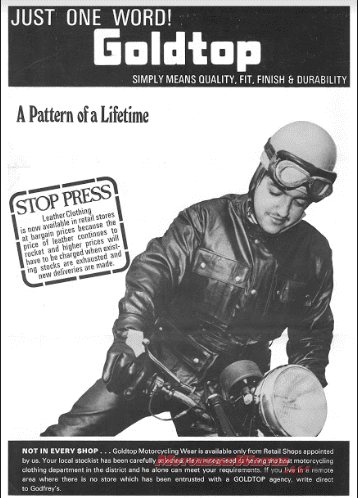Returned riders who have had several years off the motorcycle for various reasons, may be over-represented in the crash statistics, but that is no reason not to ride. (Above photo used for humour reasons only!)
Some say the statistics are a furphy, while others (such as Professor Narelle Haworth of the QUT Centre for Accident Research and Road Safety) suggest returned riders should re-sit their licence.
Click here for more on this hot topic!
However, there is little support for her suggestion, even among police!
So you are still within your right to use your valid motorcycle licence.
And so you should!
A motorcycle can restore the inner youth you feel you may have lost when you stopped riding to concentrate on your career and/or family.
However, there are several important points returned riders should consider.
The motorcycle

If you are going to ride the bike that’s been parked up in your garage for several years, it will need a thorough safety inspection.
Tyres, battery, oils, etc will all need either upgrading, replacing or some TLC.
Click here to find out more about restoring a bike to running order after hibernation.
If you are thinking about buying one of those shiny, new, high-powered sports bikes like the racers ride or that you used to race, you probably should reconsider.
Your ageing body might not be able to tolerate the crouched riding position any more. Perhaps a more upright type of bike would be better.
Seriously consider what type of riding you want to do, ask fellow riders for their tips and search through our reviews section.
Are you going to ride to your local cafe, commute daily, tour long distances or ride off the beaten track? This will determine what type of bike you should buy.

You don’t necessarily need the newest, biggest, most powerful or the most technological bike.
In fact, if you are a little wary you could drop it in your driveway, it might be best to start with a cheaper and lower-powered bike to get back into riding.
After all, you definitely will be upgrading your bike every couple of years. That’s just standard practice among mature-aged riders.
Be aware that most modern bikes at least have ABS which you may not be used to on a motorcycle.
When it was introduced to cars, there were many crashes where drivers felt the unusual pulse through the brake pedal and let go of the brakes.
The same can happen with a motorcycle.
Returned riders

Which brings us to the rider.
If you’ve not ridden a bike with ABS, you will need to learn how to use it correctly.
That means going back to school, or at least an advanced rider class.
There are many available and they are all pretty good and a great amount of fun.
If the courses are graded, start at the bottom and work your way up to advanced levels and maybe even track days on a closed circuit.
You can also brush up on your riding theory by checking out the many articles in our Tips/training section.
Riding requires a 100% commitment to concentrating on the road and its many hazards. Anything less can be lethal.
Don’t push yourself too far, too soon.
Try to join a group of like-minded riders, but avoid groups where peer pressure forces you to ride outside your capabilities.
Groups can be helpful with riding tips as well as looking out for you on organised rides.
Your safety gear
In the 1970s, my riding gear consisted of army surplus clothing and boots. When it rained, I wore a raincoat and fishing waders.
These days there is a host of motorcycle-specific gear that will suit any sort of riding, terrain or weather.
The safest gear is a full leather race suit with race gloves and boots, plus an expensive full-face helmet.
But that gear would be hot, uncomfortable and restrictive on a touring bike, cruiser or an adventure bike.
So find the appropriate gear for your riding style.
Ensure it has legitimate European certification (look for labels with “EN” followed by a series of numbers).
You can also check the safety and comfort ratings of jackets, pants and glove on the Australian MotoCAP website.
Check helmet ratings on the NSW Consumer Rating and Assessment of Safety Helmets (CRASH) site or the UK’s SHARP helmet rating system which is more comprehensive.
Always go for safety over fashion and quality over a bargain!




